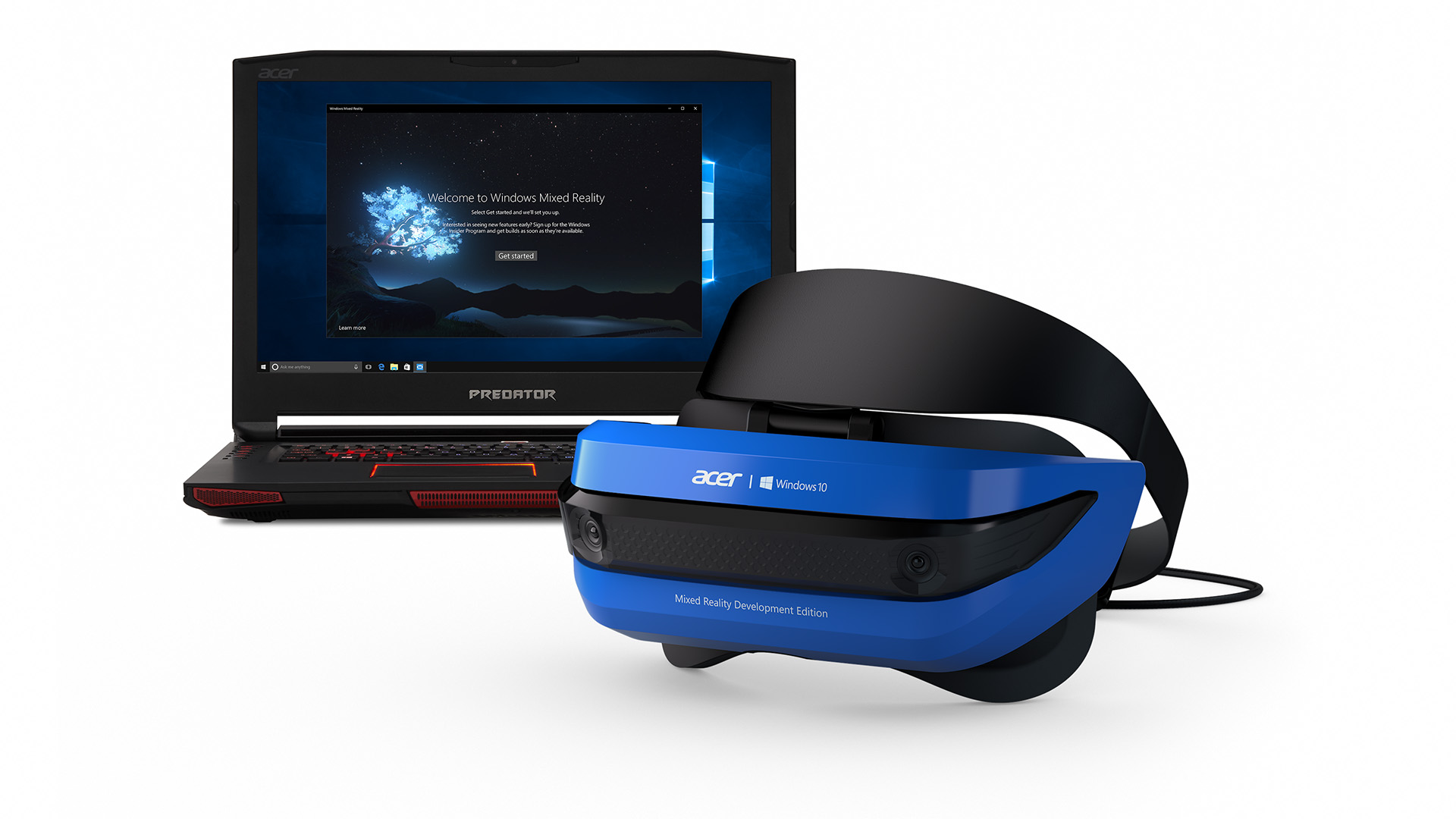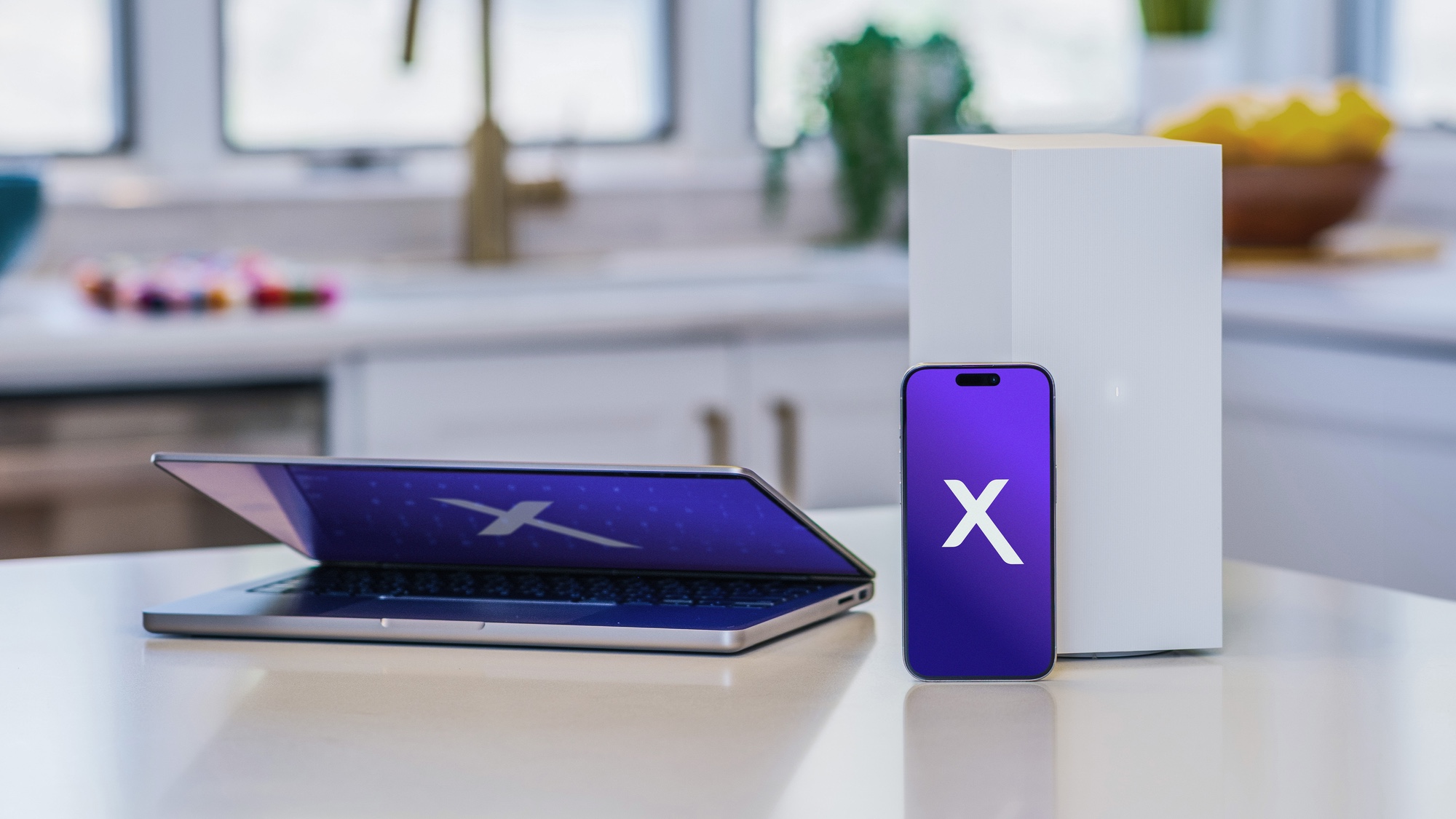Microsoft's Sub-$300 Mixed Reality Headsets Are Coming, and I Tried One
A new breed of head-mounted displays promises to deliver immersive experiences for much less money (and complexity) than Oculus or Vive.
They say you shouldn’t look directly into the sun for too long, but I couldn’t help myself. I was too busy watching little balls of fire jumping around on the surface of our giant star. As I stepped forward and cocked my head to the left, I could see the orb from a different angle.
Not only did I not get sunburned in the Galaxy Explorer app, I didn’t even feel queasy. That’s thanks in part to the six degrees of freedom Microsoft’s new mixed reality headsets offer, which will be on store shelves this fall from five partners starting at under $300.

This headset was made by Acer, but there won’t be that many differences between the various models other than their cosmetic design. And that’s on purpose. During a meeting with Microsoft in New York City, I learned that the company worked closely with Acer, Asus, Dell, HP and Lenovo to co-engineer the hardware.
The goal: deliver mixed reality experiences that feel seamless and are an extension of Windows itself.
MORE: Best VR Headsets - Virtual Reaility for PCs and Smartphones
You could argue that virtual reality was as hot as the sun for a little while, at least when it comes to the hype factor. But then people didn’t really embrace devices like the Oculus Rift and HTC Vive as some had predicted. Microsoft sees three key reasons for the current state of VR ennui and is trying to tackle them head-on.
Microsoft Wants to Solve These VR Pain Points
1. It’s too hard to set up.
In order to get room tracking working on a device like the HTC Vive, you need to set up base stations around the room and spend a bunch of time downloading software and working out kinks. Not so with the mixed reality headset I tried.
The setup process was pretty painless. We fired up an app, plugged in the headset (which connects via HDMI and USB 3.0) and then performed a brief calibration. You should be up and running in under 5 minutes.
In addition, because the headsets themselves offer six-degrees of freedom in terms of motion tracking -- a feature borrowed from the HoloLens -- you don’t need any cumbersome base stations.
2. The cost is too high.
The Oculus Rift starts at $499 and the Oculus Rift and Touch Controller start at $598. The HTC Vive goes for $799. And that doesn’t include the cost of a powerful gaming PC with discrete graphics. Microsoft says that it’s mixed reality headsets will start at $299, and that you’ll be able to use them with a $500 laptop that has integrated graphics.
3. There’s not enough content.
This is the real kicker. Microsoft is getting mixed reality headset kits into developers’ hands now so that there will hopefully be a robust selection of apps come this fall. The company isn’t just targeting games, either; it wants to deliver productivity apps, too, as well as other entertainment experiences. In the Windows Store, you’ll know if a given app is optimized because it will say Windows Mixed Reality and have a dedicated icon.
In addition, standard Windows 10 apps will work as “flat” apps when you have one of these displays on your face. During my demo, I could teleport around a virtual room by using the Y button on an Xbox controller, and then fire up an app on the wall in front of me, such as a browser or video player, by pressing the X button.
In the browser, I could scroll down by pressing down on the controller, but then I asked whether I could just reach out and scroll with my fingers. That sort of capability will likely come later as Microsoft or its partners develop touch controllers, which would bring your hands into the virtual space. Still, it was kind of neat that the text appeared more crisp as a I leaned towards the wall.
True Multitasking, Less Silos
One of the areas where Microsoft’s mixed reality headsets will stand out is multitasking. It won’t just be about diving into an app and then having to back out to try something else. In my virtual home, I could bounce from one room to another and check out various apps on the walls, or even place holograms into my living space, like a hologram of an astronaut.
MORE: 25 Oculus Touch Games (You Should Be Playing)
Microsoft also emphasized that because mixed reality apps will live in the Windows store, there will be more opportunities for multi-player experiences, regardless of which mixed reality headset you buy. Today, someone on Vive can’t challenge someone on Rift, or collaborate with them on a VR experience together.
Still Geeky, But More Comfortable
The Acer headset I tried on had a dork factor to it, but I did like that I didn’t have to pull it over my head to get situated. It works more like a visor. So not only did I not mess up my hair, but I could also quickly lift the visor when I needed to locate the Xbox controller on the table or talk to someone. The headset looked like it should have enough room to accommodate glasses.
There’s Still Wires...
One problem Microsoft couldn’t solve is the cable issue. Granted, two wires running off of a laptop isn’t exactly a rat’s nest, but you still need to be mindful so that you don’t trip should you go for a standing experience. Microsoft reps told me that it couldn’t deliver the kind of throughput that’s needed over a wireless connection without ballooning the cost. For now, this is about getting mixed reality onto as many faces as possible.
MORE: VR a Bust Now, But Oculus' Next Headset Will Change Everything
Outlook: Mixed But Optimistic
Overall, Microsoft seems on track to address many of the pain points that have turned shoppers off to the Oculus Rift and HTC Vive, and I could easily see affordable Windows laptops coming bundled with these headsets this fall for even more aggressive prices than $299.
However, even though many existing Windows 10 apps work with these head-mounted displays, there will need to be dozens of great apps optimized for mixed reality at launch in order for these displays to avoid a hot-and-cold reaction. It’s now up to the developers, developers, developers.
Sign up to get the BEST of Tom's Guide direct to your inbox.
Get instant access to breaking news, the hottest reviews, great deals and helpful tips.
Mark Spoonauer is the global editor in chief of Tom's Guide and has covered technology for over 20 years. In addition to overseeing the direction of Tom's Guide, Mark specializes in covering all things mobile, having reviewed dozens of smartphones and other gadgets. He has spoken at key industry events and appears regularly on TV to discuss the latest trends, including Cheddar, Fox Business and other outlets. Mark was previously editor in chief of Laptop Mag, and his work has appeared in Wired, Popular Science and Inc. Follow him on Twitter at @mspoonauer.
-
Isaac_46 I am sorry but I have VR and I can see its potential. 499 is very cheap for the technology that it gives you. many cell phones cost more then a VR headset does. I don't think the wires are that big of a deal and I think your complaints are a little over picky.Reply -
Mickael_5 Most biased article I've read in a while.Reply
Wouldn't be a bad thing for you to do more research on the topic too, might avoid some of the false statements you're throwing out.

